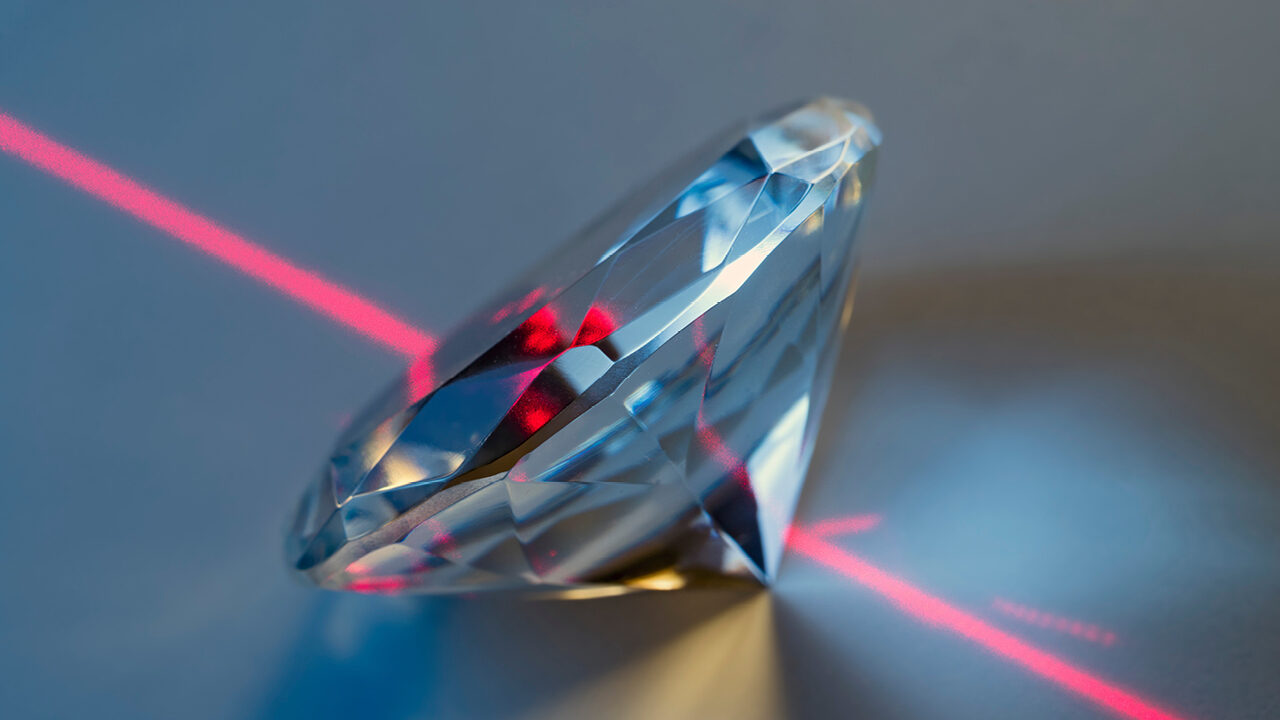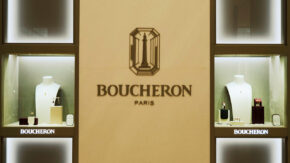The automation of diamond grading could finally eradicate subjectivity and bring previously unattainable consistency.
The lack of consistency in diamond grading has been a constant bugbear among diamond dealers. This is thanks to the subjective nature of the process, which means it’s considered reasonably acceptable to have a “one color- or clarity-grade variation” in grading reports.
Add to this the variations among different labs — some of which are known for their “softer” standards — and it is little wonder the accuracy and transparency of grading has become a key issue.
Nonetheless, the importance of certificates to consumers has never been greater. The public is becoming increasingly aware of diamond characteristics thanks to the internet. This has dramatically boosted the demand for grading certificates.
“Today, a vast majority of consumers do their research before making a purchase, and often insist on buying with a certificate,” explains Ayelet Lerner of Antwerp-based Lerner Diamonds. “In this case, the retailer will not always have much choice but to offer them a certificate.”
The better-informed customer
However, this more savvy generation also wants guarantees of quality and authenticity, according to Roland Lorie, CEO of the Antwerp-based International Gemological Institute (IGI). And they don’t have much time for human error or inconsistencies when it comes to diamond grading. But a major shift in how diamonds are evaluated could be the beginning of the end for inconsistent grading.
“Technology has the capacity to end this situation and reassure the consumer that when a diamond is submitted for grading, the playing field is even,” says Gaetano Cavalieri, president of the World Jewellery Confederation (CIBJO).
The global diamond industry will also benefit from technology’s ability to help ensure profitability by reducing costs, according to Ernie Blom, president of the World Federation of Diamond Bourses (WFDB). Automated grading, for instance, can drastically bring down the cost of labor. “Technology is going to develop further, without a doubt,” says Blom.
The WFDB president believes the diamond sector is comfortable with such advancements. Machines, he states, “will not replace gemologists, but [they] will be able to streamline the process and help attain more accurate grading. New technology will help determine the value of the stone accurately, to the benefit of both manufacturers and consumers. The industry is very different from 30 to 40 years ago, when the human eye decided everything.”
In the eye of the beholder
The Gemological Institute of America (GIA), which introduced standards for grading decades ago, has a strict framework in place to ensure the most accurate grading possible and to minimize human error.
“Technology has been integrated into grading and accepted by the gem and jewelry industry. That said, one has to remember that a key aspect of how a ‘gem’ is defined is ‘beauty,’” says Tom Moses, the GIA’s executive vice president and chief laboratory and research officer. “Instruments can help in describing the measurable qualities of diamonds, but the gem’s appearance is critical to those buying diamonds.”
As such, grading will always rely on human experience and perception, according to Moses. “It may be possible to build that experience and perception into some instruments, but there will always need to be a human element to ensure that the instruments are operating properly.”
Regulation is key
In January, the London Diamond Bourse (LDB) hosted a round-table discussion about grading technology, during which diamond dealers voiced concerns about another longstanding issue: the lack of universal grading standards.
The participants also called for more policing of reports. “The labs should be regulated,” stated Victoria McKay, the LDB’s chief operating officer. “You wouldn’t buy a house without having an inspection by a vetted professional to give you a report, as opposed to an unregulated opinion.”
She added that “a harmonization of standards would go some way to a future strategy, as would labs welcoming regulation, accreditation and transparency in grading standards.”
THE LONG ROAD TO A COMMON LANGUAGE
While diamonds are billions of years old, the origin of grading certificates can be traced back over decades.
In the mid-1940s, the GIA’s Richard T. Liddicoat recognized there was no standard for evaluating diamonds.
He created a common language that could be applied to the varied systems the industry was using.
This had three significant consequences.
1. The GIA International Diamond
Grading System allowed the institute’s students and graduates to use standard scales and nomenclature — the D-to-Z
scale for color, and flawless to included for clarity — to compare the diamonds they were reviewing.
2. By the early 1950s, industry traders began to come to the GIA’s laboratories for grading “opinions” that were used as the final word in negotiations between buyers and sellers. This was the start of the GIA Diamond Grading Report, which grew over the next six decades to where it is today.
3. Now virtually every other organization offering grading reports uses the GIA nomenclature that
Liddicoat created.
Daniel Seller of London-based diamond dealer Loupe Ltd said certificates were a vital safety net in identifying the characteristics of a diamond, but he, too, called for regulation. “We are in favor of certificates, but the certificate business is in a mess,” he declared. “There is no standardizing and no policing.”
Of course, diamond dealers could face squeezed margins as grading becomes more precise, the participants cautioned. “The more you manage to standardize grading, it takes away our role,” argued London-based dealer Howard Levine of diamond trading platform Diamnet.
No tolerance for inaccuracy
Labs such as IGI and De Beers’ International Institute of Diamond Grading & Research (IIDGR) ensure that all diamonds undergo multiple checks to reduce the likelihood of human error.
“Human errors exist in every business. We at IGI have all items checked by more than one person, and it is always done in combination with the available technology,” explains Lorie.
Moses, meanwhile, says the GIA’s most experienced graders rotate among the institute’s various labs to monitor performance. “We also submit pre-graded, blind control diamonds to the laboratories each day to evaluate both each grader’s consistency and the overall consistency of each location.”
At IIDGR, a thorough recruiting process ensures that graders meet the most stringent standards, such as remaining alert for longer periods and being able to work in a dark environment, says the lab’s president, Jonathan Kendall.
“Technology is first and graders second,” he stresses. “IIDGR uses a black-box system so graders cannot know who owns the diamonds. We are in the business of trust and honesty, where integrity is critical. That is the role of the grading labs.”
However, while these labs are constantly seeking ways to cut down on human error, others are looking to use technology to eradicate the subjectivity of human appraisers while also reducing the cost and length of the diamond grading process. Sarine Technologies is spearheading this radical shift. Its Profile Report, which already provides information on a diamond’s light performance and quality, now grades cut, clarity, color and carat weight, while authenticating diamonds.
WHEN GRADING GOES BAD
The grading industry has certainly seen its share of controversy over the years.
One of the highest-profile cases happened in 2014, when reports of overly generous grading by gem lab EGL International surfaced.
In response, Rapaport Group chairman Martin Rapaport issued an appeal for honest grading to protect the consumer. “The misrepresentation of diamond quality by laboratories that over grade diamonds poses a significant threat to the diamond industry,” he said in a 2014 video address titled “Honest Diamonds.”
“Hundreds of thousands of consumers have purchased more than $1 billion of over-graded diamonds,” he continued, declaring that “honest grading is the essence of our business.”
In 2005, New York diamond dealer Max Pincione sued the GIA and diamond seller Vivid Collection, claiming that the GIA grading certificates of two diamonds he had bought from Vivid Collection and sold in Saudi Arabia had been “upgraded.”
The lawsuit was later “resolved,” according to the parties, but the details were never made public.
“This is the world’s first automated measurement and grading of all the 4Cs, as well as light performance,” says Tzafrir Engelhard, vice president of business development at Sarine. “We believe that this will truly revolutionize the industry by providing a new level of accuracy, objectivity and repeatability in diamond grading.”
Sarine has already opened its first grading lab and is forcing the rest of the industry to consider technology’s potential to transform diamond grading.
Image: Adobe stock




